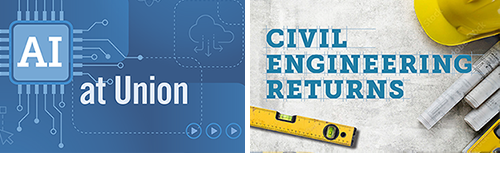Haicheng (Harri) Lin ’16, of Seattle, Wash., is a senior user experience designer at NVIDIA. As his title implies, he designs software and improves the experiences of people who use that software. For instance, Lin develops software that allows researchers/scientists to tap into computing resources from data centers (warehouses filled with vast amounts of servers and high-performance computers), thus facilitating their work on advanced artificial intelligence and machine learning initiatives. One example is scheduler software. Think of it as the operating system for high-performance computers – it efficiently organizes and automates task execution across multiple networks and servers. In other words, this scheduler manages work queues, allocates resources and ensures timely completion of AI development tasks.
How do you use AI in your career?
I often use large language models (LLMs) as a learning tool to grasp knowledge pertaining to my work. For example, I will ask the model to create a study plan to help me learn something within a specific computer architecture. I also regularly ask it to simplify complicated concepts for me, as if I were a child, using analogies to aid my understanding. LLMs are also helpful in summarizing articles and papers, which spares me having to read the entire text.
But as a software designer, the most rewarding aspect of working with AI is being part of the community that shapes it — determining its capabilities, character and ethical values. The development of AI models involves gathering huge amounts of data, and the nature of this data significantly influences how the models learn and interpret information. It’s our responsibility to ensure that the data is processed correctly, ensuring that the final inputs are neutral, anonymized and free from discrimination.
For those unfamiliar with AI, how would you define it?
AI can be regarded as an entity trained with vast amounts of knowledge and data within specific domains. It possesses such expertise that it can offer ideas and suggestions to requests. Today, we might tap our phone screen manually to order a salad as part of maintaining a healthy diet. But imagine a future where AI, integrated into your phone, continuously learns from your physical activity patterns and daily routines and intelligently makes food orders without direct input from you.
This ongoing evolution of AI is really exciting. Engineers are continuously refining algorithms and optimizing parameters to enhance speed and efficiency. This improves user experience for those leveraging AI and positively impacts the environment by minimizing energy consumption. That said, I am concerned about potential over-reliance on AI. AI is designed to be an assistive tool, but it is crucial to remember that AI is not infallible and can make errors. We must maintain our judgement and critically evaluate AI-generated outcomes, ensuring that we don’t blindly trust AI without considering our own insights and analysis.
How did Union inform your path?
A double major in math and visual art ignited my desire to find a career that would allow me to use skills from both disciplines. This led me to human-computer interaction and user experience design, which perfectly blend logical thinking with an empathetic approach. The development of these skills was greatly influenced by the guidance and mentorship of my advisors, professors Jue Wang (math) and Fernando Orellana (visual art).





